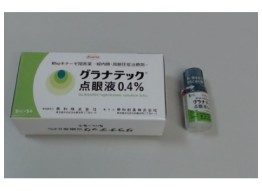Key Facts About Glaucoma and the Role of Ripasudil in Its Treatment
Glaucoma is one of the most common reasons for eyesight deterioration and loss. In this article, we will talk about its types, risk factors, and prevention methods. Plus, we will explain how Ripasudil can contribute to preventing and slowing down the disease.
Types of Glaucoma
Medical professionals single out ten types of the disease:
- Open-angle. Over 90% of all cases belong to this type. The eye's drainage canals get clogged and the optic nerve gets damaged. The good news is that a doctor can easily detect the problem at an early stage and take measures to prevent eyesight deterioration.
- Angle-closure. The angle between the iris and cornea gets closed. The eye pressure increases because of insufficient liquid drainage. In this case, it is especially important to start the treatment without any delays.
- Low-pressure, alternatively known as normal-pressure. The optic nerve gets damaged even though the eye pressure fails to increase above the standard level. The scientists keep investigating the potential reasons.
- Secondary. The disease develops as a result of a problem that can be easily identified, such as inflammation or injury.
- Pigmentary. Tiny particles of the iris pigment get trapped in the eye's drainage system, which boosts the pressure and damages the nerve.
- Congenital. It is an innate anomaly caused by the incorrect development of a baby before it is born.
- Exfoliative. The drainage system of the eye gets clogged with a flaky material. It is a private case of open-angle glaucoma that tends to have more high pressure peaks and greater pressure fluctuations.
- Neovascular. This type is frequently accompanied by diabetes. New blood vessels form abnormally on the iris.
- Uveitic. First, the iris suffers from inflammation, and then, glaucoma develops on top of it.
- Traumatic. The disease can appear as an immediate result of an injury or manifest itself years after it.
At an early stage, Glaucoma usually lacks symptoms. However, a doctor should be able to detect it at a checkup.
Risk Factors
A person can become prone to glaucoma if they tick at least one of these boxes:
- Are aged over 55
- Are of Black, Asian, or Hispanic heritage
- Have parents or grandparents who were diagnosed with glaucoma
- Have narrow drainage angles or corneas that are thin in the center
- Suffer from pronounced farsightedness or nearsightedness
- Have migraine, diabetes, high internal eye pressure, or high blood pressure
- Have undergone specific types of eye surgery or have had eye injuries
- Take corticosteroid medicines
The more criteria an individual meets, the higher their risk level.
Prevention Methods
To slow down the development of the disease, one can resort to the following measures:
- Examine their vision regularly. The recommended frequency depends on the patient's age and individual exposure to risk factors. For healthy people younger than 40, it is enough to have an exam once every 5 to 10 years. After 40, it is advisable to see a doctor every year or a couple of years.
- Wear eye protection. When playing sports or using power tools, one exposes themselves to eye injury risks. Protection can help to avoid them. According to some sources, UV rays might also contribute to the disease progress. On a sunny day, it would be wise to wear polarized sunglasses.
- Use the prescribed medicine. Eye drops can prevent glaucoma from developing if the person takes them continuously. A doctor can prescribe them to a patient even if the latter lacks pronounced symptoms yet.
- Avoid head-down positions and lifting heavy weights in sports. Patients with glaucoma are allowed to practice fitness and yoga. However, selected positions and too intense workloads can increase eye pressure, that's why it's better to substitute them with milder alternatives.
- Consume large amounts of colored fruits and leafy green vegetables. These products are beneficial for human eyes.
- Avoid sleeping with one's eye against one's arm or pillow. Such positions can create excessive pressure on the eyes.
A medical expert can provide each patient with more detailed personalized recommendations.

Role of Ripasudil in Treatment
Ripasudil is an active component of various drugs that can help to slow down the development of glaucoma — for instance, the Japanese Glanatec. It contributes to reducing intraocular pressure and improving the patient's vision. Scientific research and clinical studies have proved its high efficiency. This ingredient can cope even with severe cases when other drugs fail to deliver any result.
Ripasudil is a generally safe product. However, pregnant or breastfeeding ladies should avoid using it. Besides, it might cause allergic reactions in some people.
The drug is usually released in the format of liquid drops. The recommended dosage can vary from one patient to another, so it is necessary to discuss it with a healthcare provider before one starts to take the treatment. The doctor can explain how to safely combine Ripasudil with other medications if the patient needs it.


